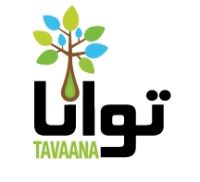Syria Analysis: Creating the Latest Scare Story "Iranians Fighting Alongside Hezbollah"
 A story of how US Government spin became headline "fact" by Wednesday morning.,,.
A story of how US Government spin became headline "fact" by Wednesday morning.,,.
On Tuesday, the State Department set up a conference call with a "senior official" on Syria. In the midst of answering a question about the fighting in Qusayr near the Lebanese border, the official said:
It is the most visible effort we have seen of Hezbollah to engage directly in the fighting in Syria as a foreign force. We understand there are also Iranians up there. That is what the Free Syrian Army commanders are telling us. I think this is an important thing to note, the direct implication of foreigners fighting on Syrian soil now for the regime.
The official produced no evidence or further explanation, but immediately moved to criticism of regime operations: "If they do capture [Qusayr], that there will be retaliation against the civilian population, and there are still thousands of civilians in the city."
However, pressed for any information confirming the claim from the "Free Syrian Army commanders", the official stalled:
I just can’t answer that question, I’m sorry. I don’t --- to be very frank, I don’t have any estimates of numbers and I don’t know that they are directly involved in the fighting, but I don’t think the people that I’m talking to know that themselves. So --- but they say that there is both Hezbollah on the ground as well as Iranians on the ground.
No problem. Anne Gearan of The Washington Post was happy to proclaim a confirmed story of a "proxy war":
Iran has sent soldiers to Syria to fight alongside forces loyal to President Bashar al-Assad and those of the Lebanon-based Hezbollah militia, a senior State Department official said Tuesday.
An unknown number of Iranians are fighting in Syria, the official said, citing accounts from members of the opposition Free Syrian Army, which is backed by the United States....
The U.S. official’s allegation was a tacit acknowledgment that the two-year-old Syrian conflict has become a regional war and a de facto U.S. proxy fight with Iran.
Steven Lee Myers and Michael Gordon --- best-known for his "confirmed" stories of weapons of mass destruction in Iraq before the 2003 war --- went even farther in The New York Times: "Iran and Hezbollah Support for Syria Complicates Peace-Talk Strategy".
Gordon was in the conference call --- he asked a question to the senior official about US "non-lethal" aid. Curiously, however, he does not mention any of the official's far-from-conclusive remarks in the article, except for this sweeping sentence: “Iran’s role and Hezbollah’s role has grown substantially over the last couple of months."
Instead, to back the headline, Myers and Gordon simply create the reality in the opening paragraph: "As evidence grows of increased Iranian support for the Syrian government, the Obama administration’s strategy to bring the bitter fighting there to a close faces more challenges than ever."
So what is the evidence? There are a series from other mysterious "American officials", presumably not through conference calls:
According to American intelligence reports, there are some 200 Iranian paramilitary Quds Force personnel in Syria. Qassim Suleimani, the Quds Force commander, recently ordered Iranian artillery and armor officials to help Mr. Assad’s regime, American officials say.
And Mr. Suleimani has also requested that several hundreds fighters from Asaib al-Haq and Kataib Hezbollah, two Iraqi Shiite militias that have been trained by the Iranians, join the war effort in Syria, according to officials familiar with the intelligence assessments. Iran is heavily involved in training thousands of members of Mr. Assad’s militia, the Jaish al-Sha’bi, including in Iran.
Iran’s somewhat shadowy role burst into the open in February when Brig. Gen. Hassan Shateri, a Quds Force officer, was killed when he ran into a rebel checkpoint after visiting Aleppo.
These exciting paragraphs begin to crumble on closer examination. Gordon and Myers, whether from their sources or their translation of them, exaggerate Iranian logistical and advisory assistance to the Assad regime --- detailed on EA --- into the vague, unsubstantiated insinuation of direct involvement of Iranian artillery and armour.
The reporters out the scare story --- echoing earlier US spin of Iraqi factions as Iranian-directed --- of Tehran bringing those fighters into Syria. They convert Iranian support of the Syrian-developed Jaish al-Sha'bi (People's Army) --- again noted on EA --- into "intensive training". They re-write General Shateri's openly-acknowledged supervision of reconstruction projects in Lebanon and Syria as covert leadership of unnamed nefarious activities.
So why does this matter?
There is an important story here of how Iran, facing the difficulties of the position of Syria and the prospect of escalated Western intervention, is manoeuvring politically behind Damascus. It is putting out the claim that it is organising a conference in Tehran for all factions to find a resolution, even as it continues to give military advice to the Assad regime.
This, however, is not the same as the sensational narrative of Iranian troops fighting alongside Syrian forces and Hezbollah. That is not just a "proxy war" story but a claim of a direct Us v. Them confict.

 Wednesday, May 22, 2013 at 10:02
Wednesday, May 22, 2013 at 10:02
Reader Comments